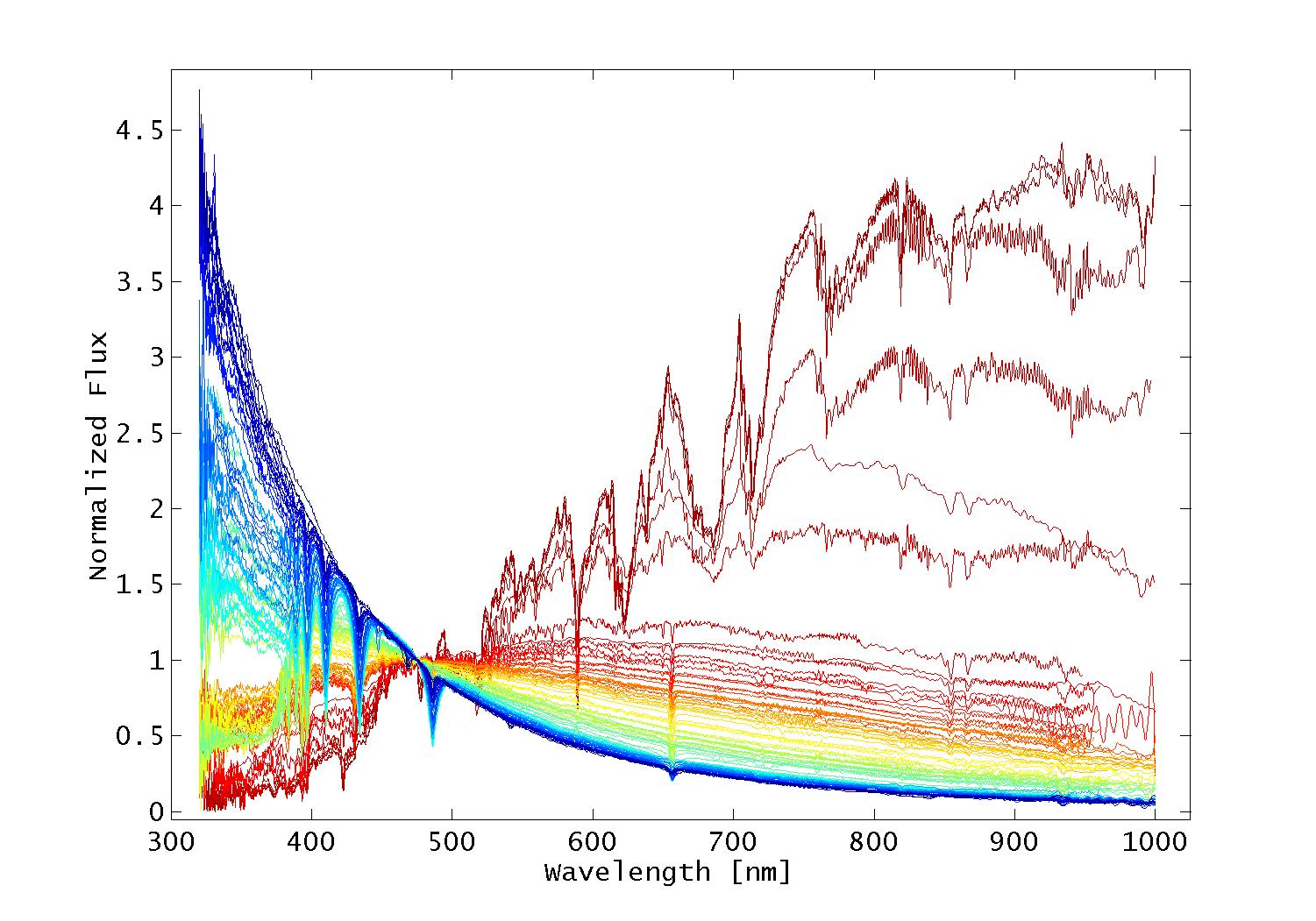|
While the internal (relative) calibration to put all Gaia photometry into a unique homogeneous system will be obtained using millions of constant stars selected during the mission, the final conversion of internally-calibrated G, BP/RP, and RVS integrated magnitudes, and of BP/RP spectra into physical units, requires an external grid of non-variable stars, with a well known spectral energy distribution (SED), and covering different spectral types.
A large survey (~440 nights) to obtain accurate reference spectra (flux tables) of 300 candidates spectrophotometric standard stars and to monitor them for constancy was started in 2007 (Pancino et al. 2012, MNRAS, 426, 1767). It makes use of NTT, TNG, REM, Loiano, CAHA, and San Pedro Mártir (and recently, TJO). A pre-launch subset of 94 flux tables, to test the Gaia pipelines during commissioning, has just been released internally in October. The picture shows the spectra ordered (and coloured) by spectral type, normalized in flux at 475 nm and covering almost the entire wavelength range of Gaia (the final spectra will be extended with models, as it is very difficult to obtain the required S/N ratio at the spectral extremes).
Image: courtesy of the CU5-DU13 team at the Bologna Observatory (INAF)
[Published: 05/12/2013]
|








































 Sign in
Sign in
 Science & Technology
Science & Technology

